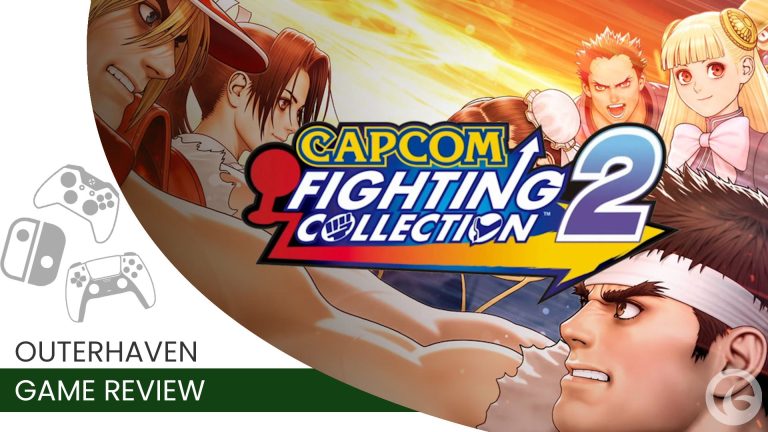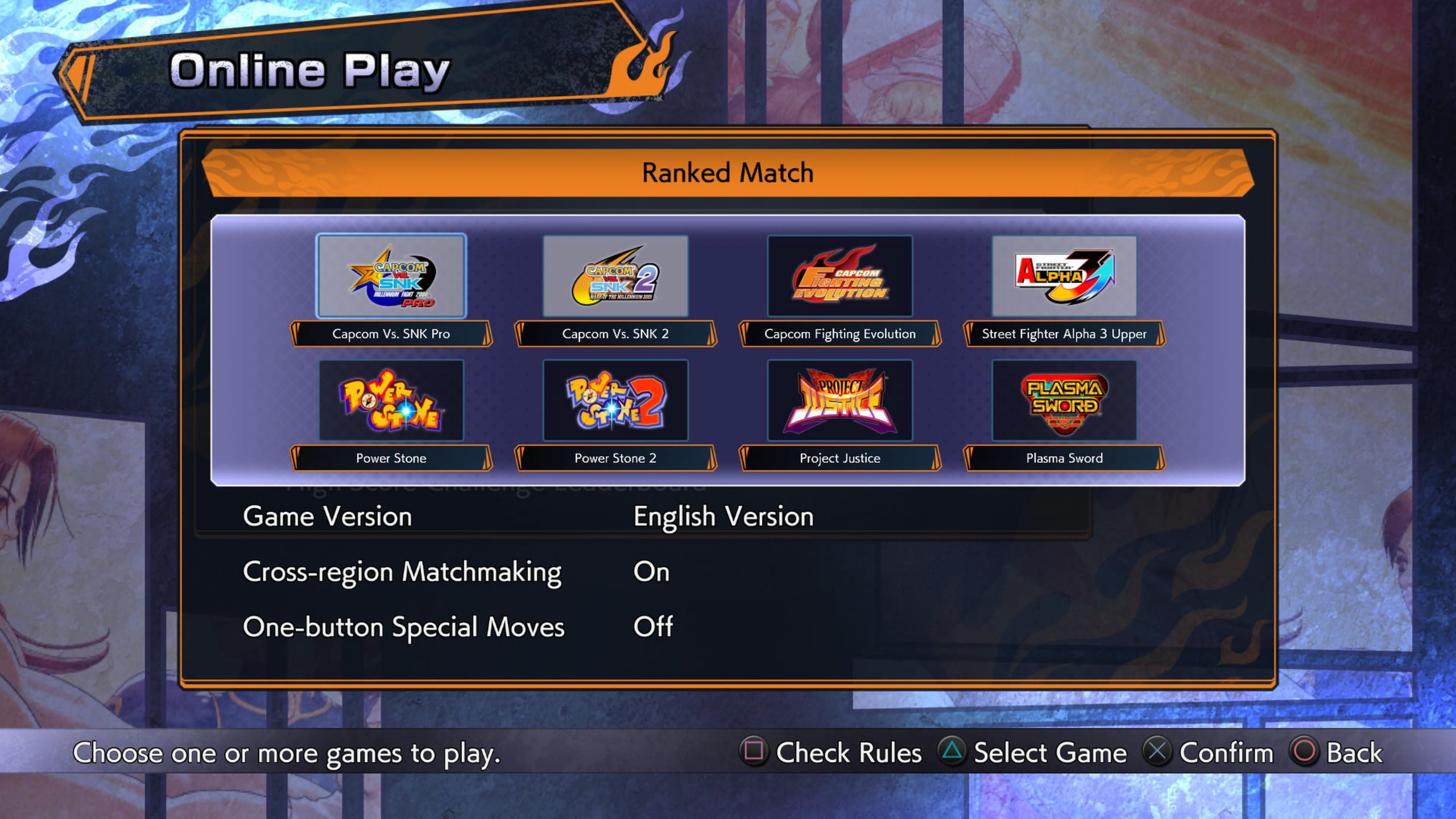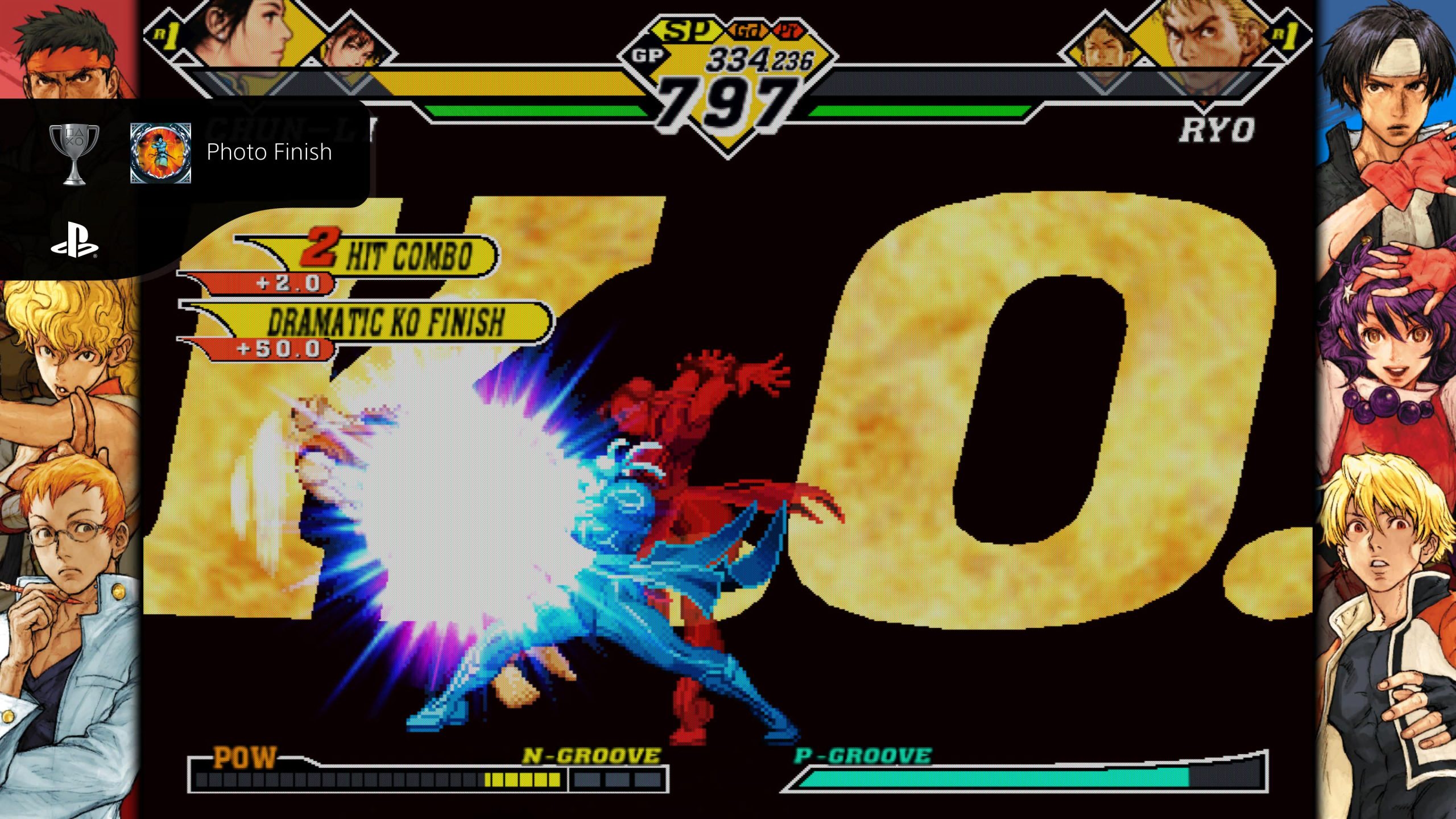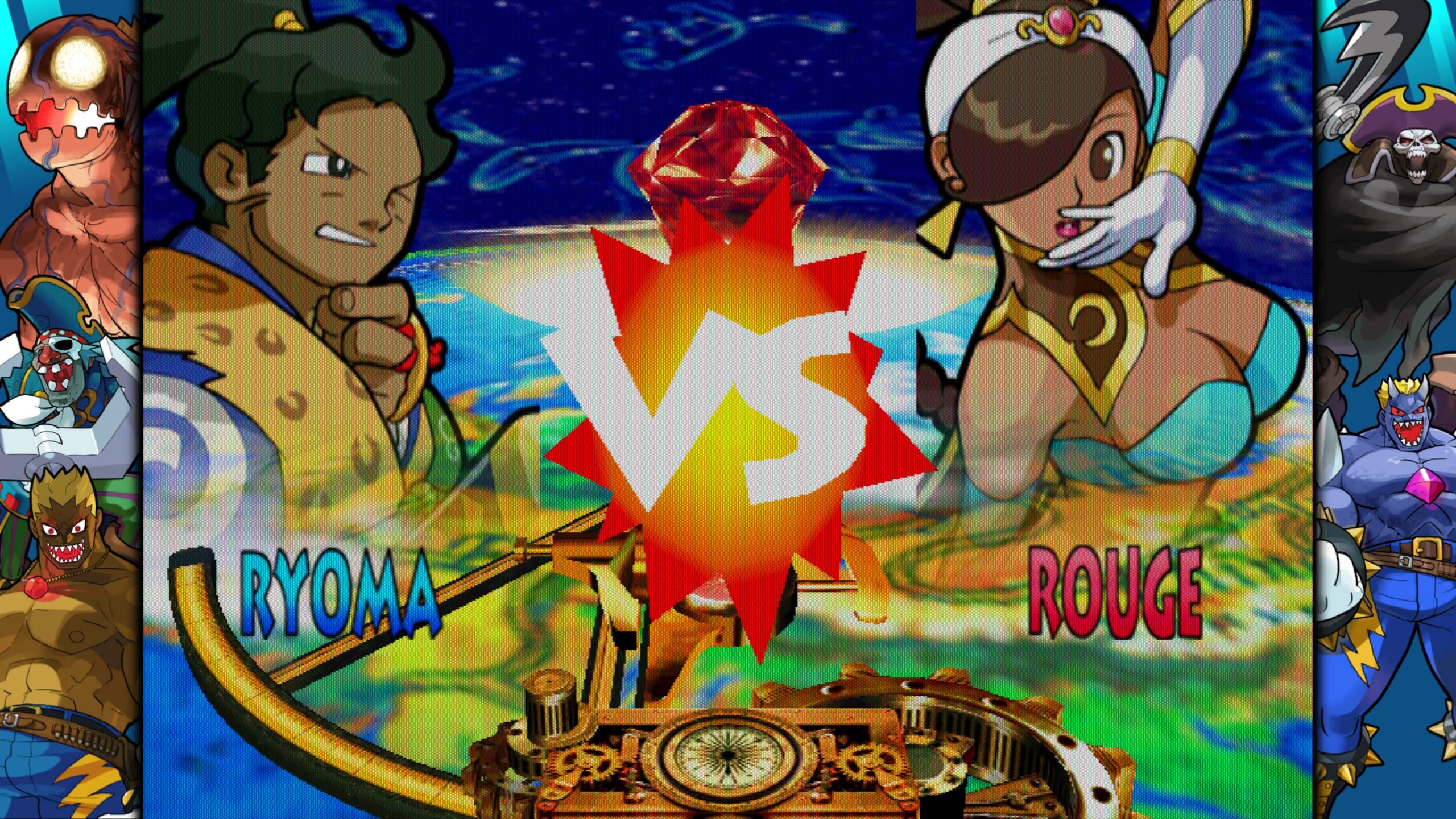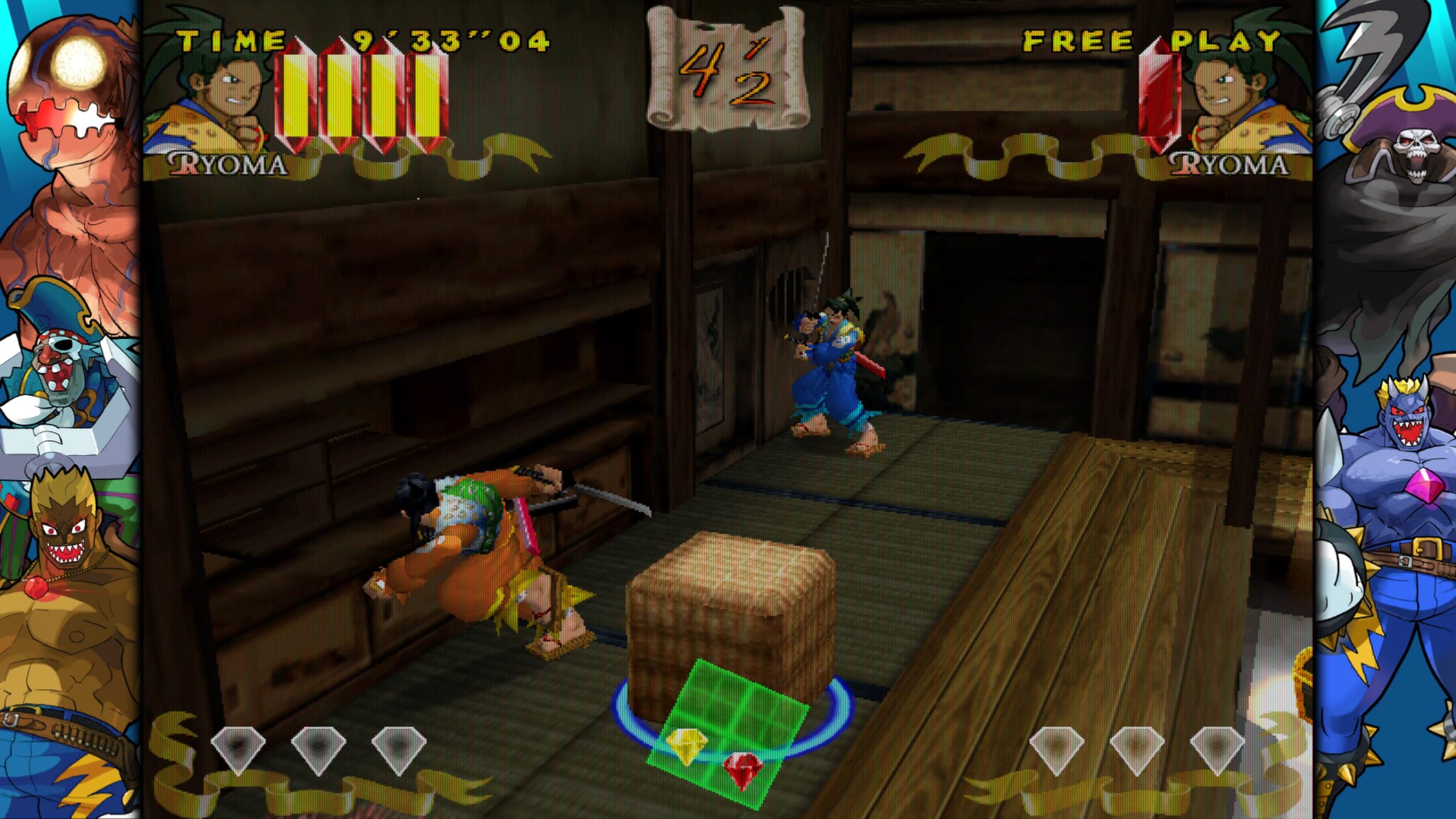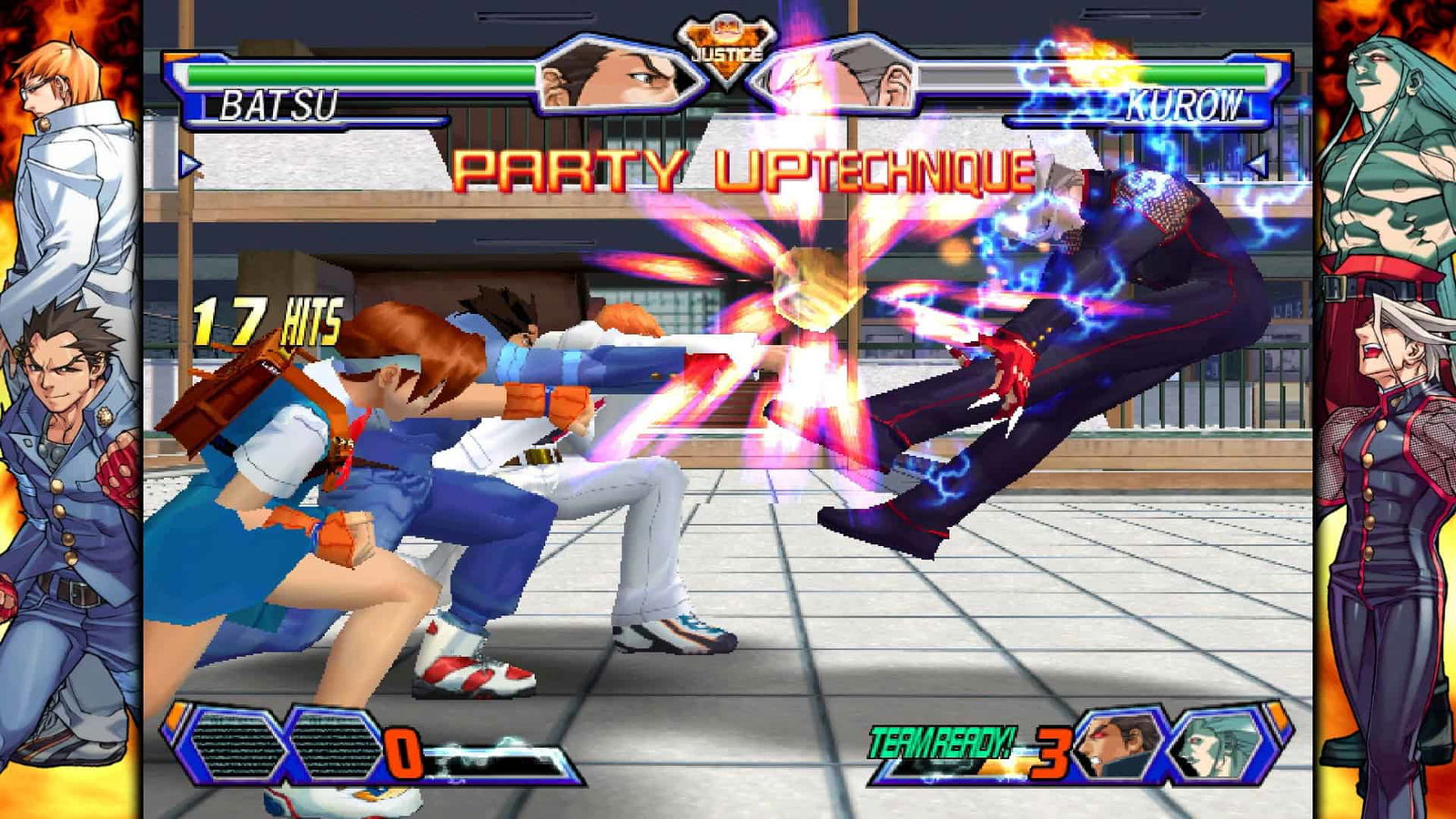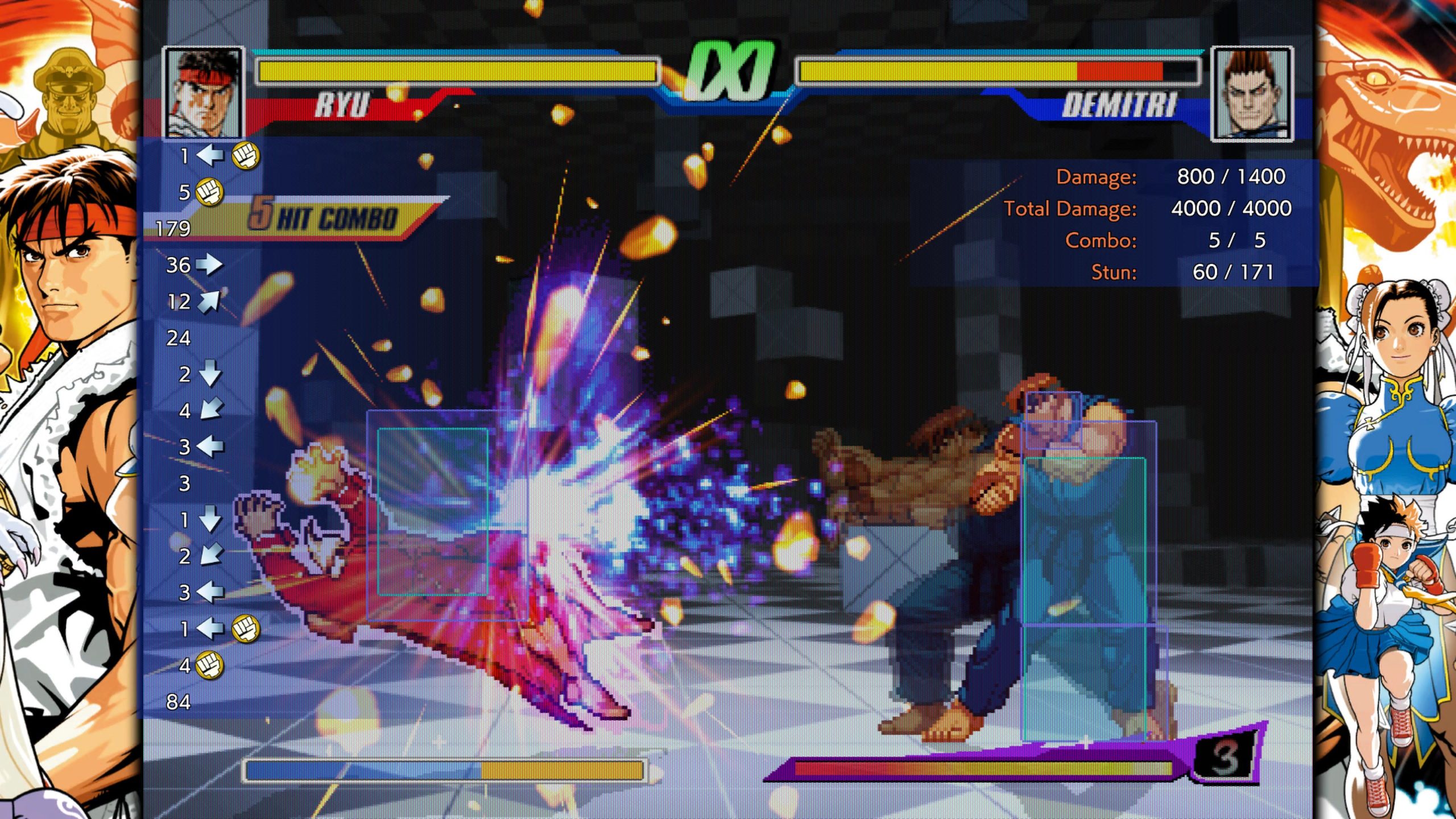Capcom Fighting Collection 2 continues the trend of revisiting Capcom’s golden era of arcade dominance. While some might argue that Capcom has already reestablished its footing with modern hits like Monster Hunter Wilds and Street Fighter VI, the roots of that success were planted long ago during its reign over arcades. The fighting games Capcom produced during that time were legendary, consistently striking gold in the coin-op scene and remaining largely unchallenged until the arcade decline set in across both hemispheres. Today, the landscape has shifted to a console-first focus, but those original titles captured the thrill of victory and the agony of defeat in ways that rivaled the emotional highs of professional sports.
Name: Capcom Fighting Collection 2
Platform(s): PC, PlayStation 4|5, (Reviewed), Xbox Series X|S
Developer: Capcom
Publisher: Capcom
Game Type: Fighting
Mode(s): Single-Player, Multiplayer
Release Date: May 16, 2025
Switching between versions is a snap, whether it’s Japanese, English, or other regional builds. You can also apply filters and skins to give the collection a polished, customized look. If you’re a fan of arcade-style scanlines, they’re here too. Every game includes a training mode with solid options to set up different scenarios, and seeing even Power Stone get its practice mode was a real treat. As for the online play? It’s peanut butter smooth.
I haven’t had a single match falter. The online experience adopts a familiar ranked mode setup similar to the Marvel vs. Capcom Fighting Collection, complete with rollback netcode. You can toggle hidden characters on or off, and in Power Stone 2, you can even change the win conditions to avoid two-player victories entirely. Leaderboards are included too, giving you another reason to climb and dominate the competition.
The museums are a fantastic touch, packed with everything from instruction manuals to early concept sketches. It’s an impressive collection—basically everything but the kitchen sink when it comes to extras and behind-the-scenes content.
The Collab Bout To Knock The Other Out
One of the biggest attractions in this collection is Capcom vs. SNK 2—a title that’s been tough to access since the 128-bit era came and went. While the PSN version stood the test of time for a bit, this re-release finally brings one of the greatest fighting games of all time back into the spotlight. Capcom vs. SNK 2 is now more accessible than ever, and yes, the long-awaited Ryu vs. Haohmaru clash is officially here on current-gen platforms. The GameCube’s “Easy Operation” setup has been reworked into simplified controls and button mapping, making advanced techniques like roll cancels easier to pull off.
All 50+ characters are available and unlocked from the start. If you’ve ever wanted to pit Mai, Terry, and Joe against Ryu, Dan, and Morrigan, you absolutely can. Arcade mode includes 3v3, the classic Ratio system, and even a Single mode option. Bringing two of the series’ most iconic entries together not only hits the nostalgia sweet spot but also highlights the renewed partnership between SNK and Capcom, potentially laying the groundwork for a modern collaboration.
Also included is Capcom vs. SNK Pro, a refined version of the original. With its noticeable improvements and balance changes, it’s easy to see why Capcom selected this as the definitive starting point for the series. And yes—landing a Finest KO still gives me chills.
Morphing To Even The Scores
The Power Stone series, making its return to consoles—after being locked away since the Power Stone Collection on PSP—is a long-awaited blast from the past. The original was a major step up from Ehrgeiz by Squaresoft, offering fast-paced mayhem, henshin-style power-up transformations, and vibrant, dynamic stages shown from a three-quarter perspective. Power Stone always gave off the same daring, experimental energy that I felt with Bloody Roar.
Combat revolves around using scattered items to pummel foes, ranging from attack dogs and lasers to even a megaphone. Power Stone 2 takes everything from the first game and cranks it up to eleven. Each round supports four players brawling through fantastical, ever-changing environments like a magical moving castle. It also features two boss fights that you and your rivals can take on together. The final boss battle in Power Stone 2 is an absolute spectacle—one of those arcade moments you have to experience firsthand. Words honestly don’t do it justice.
The main character, Fok—err, Falcon—has made cameo appearances in other Capcom titles, but seeing his full story brought back here is fantastic. Personally, I’m more of a Ryoma main. While Smash Bros. and Mario Kart are the modern-day friendship ruiners, Power Stone 2 absolutely earns its place among them with its chaotic four-player brawls. No friendships are safe when the gloves come off in this game.
The Hauzer In the Room
Capcom Fighting Evolution (also known as Capcom Fighting Jam) was a project that went through multiple iterations, originally surfacing as the 3D-based Capcom Fighting All-Stars before being scrapped. It’s definitely one for the history books—and honestly, one of the few Capcom fighters I barely spent any time with during its original run. What remains of that shelved concept lives on in Ingrid, a mysterious character from the future and the only new fighter introduced in the final version.
Rather than refining a unified system like the Groove mechanics in Capcom vs. SNK 2, Capcom decided to mash together several different playstyles based on each character’s franchise of origin, with little to no balance between them. Most of the character sprites were pulled straight from their original games, with the exceptions of Ryu and M. Bison, who were redrawn in the Capcom vs. SNK style. The result feels almost like a prototype of Neo Geo Battle Colosseum, but without the tag mechanics, focusing instead on two-character teams and isolated gameplay systems based on where the characters came from.
The mechanics, unfortunately, work to the game’s detriment in some areas. For example, Ryu uses his Capcom vs. SNK sprite but comes equipped with a modified Super Street Fighter II moveset. He still has access to his three signature supers, but they can only be used with a single stock, limiting his overall flexibility. Meanwhile, Sakura uses a version of Alpha 3‘s V-ISM, which brings its own quirks. The Warzard (Red Earth) characters, on the other hand, retain their RPG-inspired system, allowing them to level up during battle, up to around level 6, gaining access to more powerful tools as the fight progresses.
It’s a fascinating idea, but the execution feels disjointed. The complexity and lack of balance between systems make it feel more like a design experiment than a cohesive fighting game. It might have worked better if these systems were implemented as selectable Grooves, like in Capcom vs. SNK 2, allowing any character to take advantage of them. Imagine Ryu gaining access to his Donkey Kick by reaching level 4 on a Warzard Groove—that kind of cross-system potential could’ve added real depth and customization to the game.
The shining moment was to see what legendary SNK artist Shinkiro can do with a Capcom game that’s solely within his artistic image for the promotional and in-game portrait art. As usual, the man doesn’t miss, even if the game’s validity is within question. Udon Comics also provides artwork for the endings. This was stellar since at the time of Evolution‘s game’s release, Udon was at least a couple of years into the ongoing Street Fighter comic series. The company had also collaborated with Capcom to create 15th Anniversary 6-button controllers for the PlayStation 2. I still have Akuma’s variant to this very day.
School’s In Beatdown Session
Project Justice is actually the third game within the Rival Schools franchise, with the original sequel staying in Japan. Street Fighter‘s Sakura never came back as a roster choice, but is lurking somewhere within the story still. The slapstick antics of the scholastic wars continue as Batsu and his schoolmates uncover the mystery behind some attacks in Aoharu City’s schools. The game has been switched to a 3 vs. 3 thing instead. Assist-type functions are still involved.
Space Opera EX Plus Alpha
Star Gladiator‘s follow-up, Plasma Sword, is also here. Like Project Justice, this title has not seen any other ecosystems since its debut. It hasn’t been seen on its own for 25 years. Marvel vs. Capcom 2‘s Hayato stars in his own space opera without the need to explain his plot against Dr. Bilstein, a tyrant who has resurfaced from the ashes of his defeat in the first entry. The 3D fighter gets wacky with the Plasma Field mechanic, enabling infinite supers, enlarging the users, and triggering other adverse effects. The game’s multiple story paths offer a reason to dive in several times to piece together the full picture.
Street Fighter Alpha 3 Upper – An Odd but Welcome Addition
Street Fighter Alpha 3 Upper is probably the most interesting choice. It’s a version that should have been included in several collections before this one. Known as the retooled take on the original Alpha 3, it features balance changes and some tweaks to the roster. It might seem like the strangest addition at first glance, but let’s be real—a Capcom Fighting Collection is never truly complete without a Street Fighter title in the mix.
The first collection has already been delivered with the multi-groove-enabled Street Fighter II Anniversary Edition.
The Blemishes of the Masterpieces
As definitive as it is, there are some misses within Capcom Fighting Collection 2. These games are arcade ports of their former selves. As pure as it can get, balance changes and similar updates are most likely absent compared to the TLC that the console ports received. Free Play is enabled across all titles, which is a welcome baseline, but that’s where some of the quality-of-life upgrades stop.
While the original console ports are now highly sought after (just look at the prices for Power Stone 2 and Capcom vs. SNK in North America), Capcom chose not to include those versions here. For instance, Power Stone Collection on PSP allowed Valgas and Kraken to be unlocked in Power Stone 2, but this collection does not. Other robust features, like the Item Shop in Power Stone 2, which greatly extended the game’s replay value, are also missing.
Fortunately, hidden characters are still accessible, especially for Capcom vs. SNK Pro, where unlocking the full roster originally required grinding through the point system.
For Rival Schools and Star Gladiator to not be seen here alongside their sequels feels more like a nitpick. Since we’re getting their better entries and whatever tales their art galleries can explain, maybe this is a better move. With Capcom Fighting Jam being picked for this collection, the rarity could be in question for these other two. I’d probably expect them in Capcom Fighting Collection 3 with Street Fighter EX and Tech Romancer—since they’re not included.
At this point, and something I’d like to probably go into, is the need for the real behind-the-scenes for these. Interviews would have been cool with a behind-the-scenes take. Capcom vs. SNK would have a wild story for the collab, for instance. Why not dive into it with this collection? The Marvel vs. Capcom story itself was quite the trip between both the games and the animated series. Stories like this barely see the light of day, as often in collections like this.
Conclusion
Capcom Fighting Collection 2 celebrates its golden era further with some classics that were once thought to be long gone. With Capcom vs. SNK 2 and Power Stone 2 included, alongside the peculiar Capcom Fighting Evolution, this emulation collection is one to definitely command grab. While the titles feel as though they were meant to return in their made-for-console enhanced ports, the arcade and unlocks suffice the trip back without said frills added. Just the sight of these, back at home and with online play, continues the effort to translate the arcade feeling without any wrongdoings to the originals that stood out. Capcom Fighting Collection 2 is a recommended nostalgic trip.
Summary
Capcom Fighting Collection 2 brings back arcade classics like Capcom vs. SNK 2 and Power Stone 2 with solid emulation and smooth online play. It’s a nostalgic, no-frills return to the golden era of Capcom fighters, done right.
Pros
- 8 amazing choices in the titles provided
- Graphic enhancement filters
- Artwork is available for each game
- Rollback netcode for smooth online play
- Online standby allows different games to be played while waiting
Cons
- The music player doesn’t get to live outside of the games
- Ports are not their console ports, which can show a bit more age


